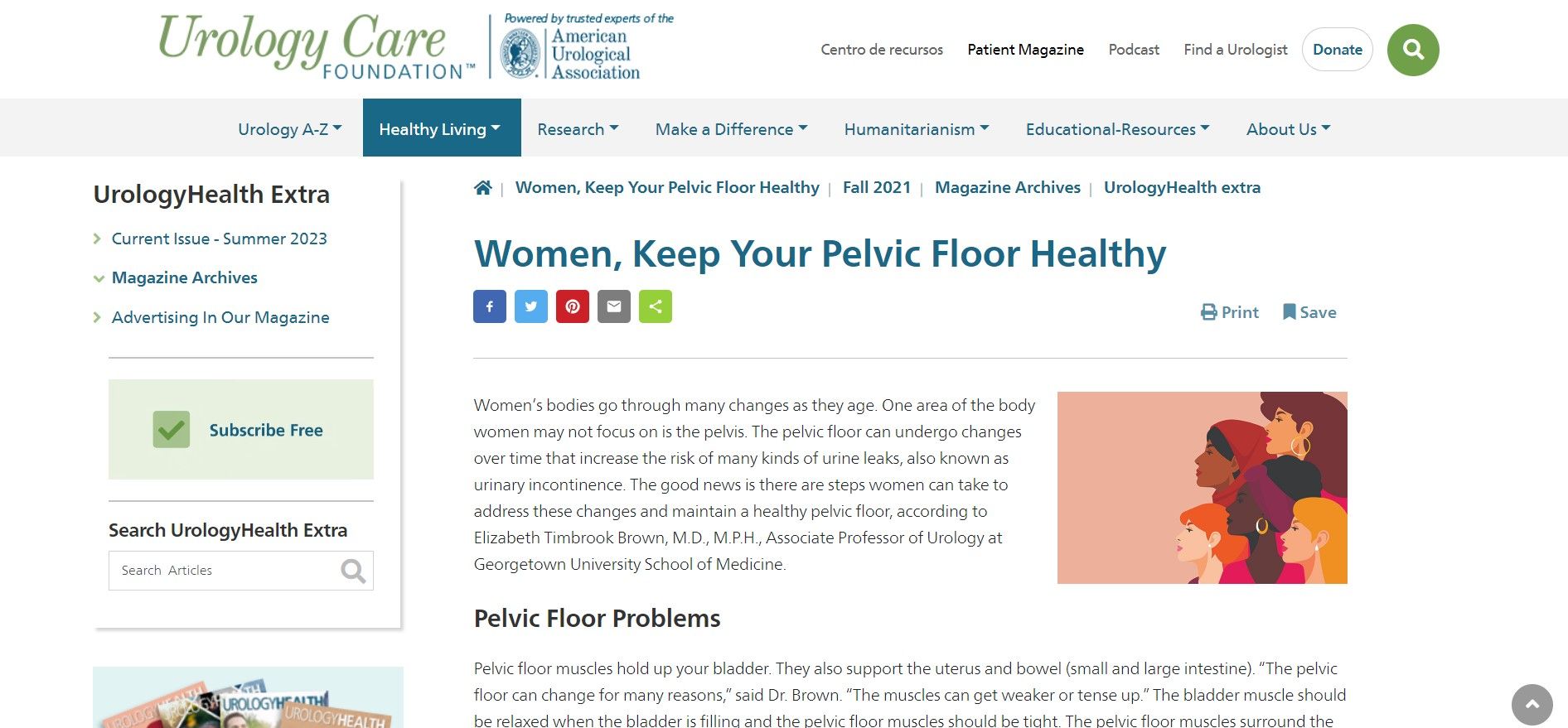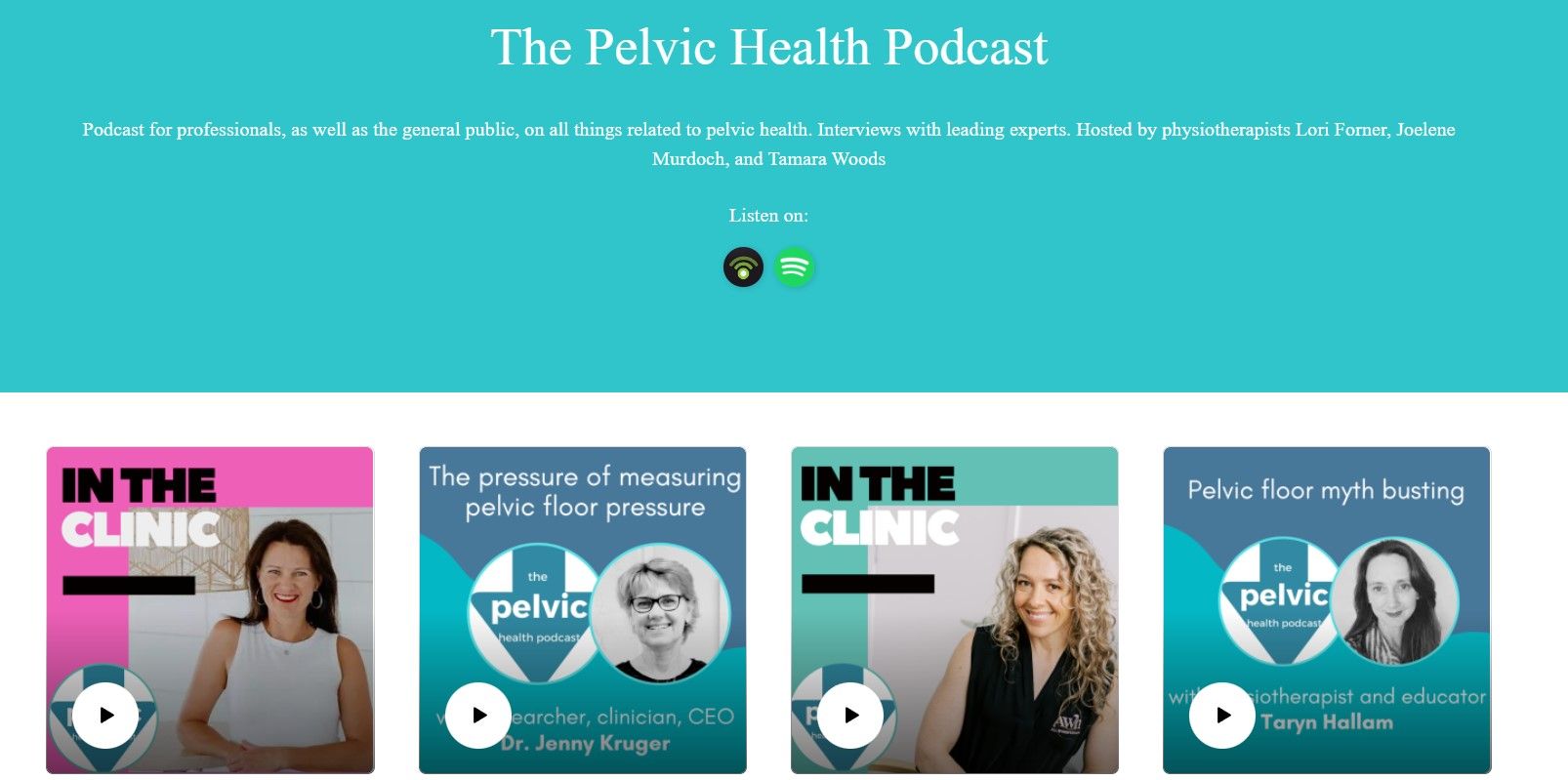Key Takeaways
- Pelvic floor health is often ignored due to social stigma, but it is important and can be addressed with the help of online resources.
- Weakening of the pelvic floor can happen due to various factors, including pregnancy, menopause, and chronic constipation.
- Strengthening the pelvic floor through exercises like Kegels is essential for preventing incontinence, pelvic organ prolapse, and other health problems.
Pelvic floor health concerns are a widely common issue yet rarely talked about, thanks to social stigma. This leaves many women to suffer in silence and shame without knowing where to look for help and advice.
Here, you'll find useful online resources with information on women's pelvic floor health and apps for you to learn pelvic floor exercises, access professional help when needed, and ultimately empower you to take care of your physical health.
Why Is Looking After Your Pelvic Floor Health Important?
Your pelvic floor muscles form a crucial supportive sling-like structure between your pubic bone and tailbone, supporting your pelvic organs (including your bladder, uterus, and rectum). Pelvic floor muscles aid bladder control, stability, and more in the spine and pelvis.
For women, the pelvic floor can become weakened by tension caused by heavy periods or endometriosis, pregnancy, childbirth, lower levels of estrogen after menopause, and straining from chronic constipation (the latter can also be an issue for men—along with prostate cancer treatment).
Strengthening your pelvic floor muscles is essential for preventing incontinence (especially after giving birth), pelvic organ prolapse, recurrent urinary tract infections (UTIs), and other associated health conditions. You can improve your pelvic floor muscles and prevent the need for corrective surgery with specific pelvic floor exercises—or “Kegels” exercises, as named after American gynecologist Dr. Arnold Kegel, who popularized the treatment in the 1940s.
To learn more about your pelvic floor health and to find tools and useful apps for Kegel exercises, take a look at the following resources.
1. Pelvic Health Solutions
Pelvic Health Solutions is a dedicated website that shares evidence-based pelvic health information to help you understand your body better. Navigate to the For The Patient area of the website to find a robust library of information, covering topics including:
- Pelvic floor health physiotherapy.
- Information about incontinence, overactive bladder (OAB), pelvic organ prolapse (POP), and bowel dysfunction.
- Female-specific issues, including endometriosis, dysmenorrhea (painful periods), vaginismus, and more.
You can find pelvic floor muscle strengthening (Kegels) within the Pelvic Floor Muscle Weakness section of the website.
2. APTA Pelvic Health
From the Academy of the American Physical Therapy Association comes the APTA Pelvic Health website. Although primarily designed for physical therapists, students, and professional assistants, you can find a useful series of patient-orientated resources on the website.
To find articles, handouts, and infographics about pelvic health (including protective measures and Kegel exercises) navigate to the menu bar at the top of the homepage. Hover over Education and select Patient Education from the drop-down menu. Here, you will find all helpful documentation on pelvic floor health information, from symptoms and diagnoses to protective measures. You can also use the Search News function to find topics of your choice, including pelvic floor exercises.
3. Femina Physical Therapy
A website dedicated to pelvic floor health for women, Femina Physical Therapy is a hub of useful resources. You can learn about all pelvic floor health topics for females, find private classes to help improve your pelvic floor strength, and seek treatment for your well-being needs.
Under the Resources section of the website, you can find free downloads and access articles about pelvic floor health. Check out the blog for a variety of health topics for women. You can also schedule a telehealth appointment If you’re concerned about your pelvic floor health and wish to speak to a healthcare practitioner from the privacy of your home.
4. Your Pelvic Floor
Created by The International Urogynecological Association (IUGA)—a professional medical association that focuses on urogynecological knowledge and patient care—Your Pelvic Floor is here to educate you about pelvic floor health. On the website, you’ll find a wealth of educational resources on disorders of the female pelvic floor based on both basic and clinical research.
Navigate to Information & Resources from the homepage to find an A to Z directory of all pelvic floor health topics. Each health topic covers a summary of the condition, answers frequently asked questions, and provides simple diagrams to help illustrate each fact sheet. You can also find a healthcare provider in your area via the homepage.
5. Better Health Channel
The Australian-based Better Health Channel offers a useful series of fact sheets on the female fertility and reproductive system, including a dedicated page on pelvic floor health.
The informative fact sheet is broken down into easy-to-digest (and simple-to-navigate) sections that cover the symptoms, causes, and complications of pelvic floor muscle dysfunction, as well as how to familiarize yourself with your pelvic floor. You’ll find a description of how to perform pelvic floor exercises lying down, sitting, or standing, and advice on how to get professional help.
You can read, listen to, or print the full pelvic floor fact sheet based on the accessibility option that suits you best.
6. Urology Care Foundation
The Urology Care Foundation is a brilliant online resource for women to keep their pelvic floor healthy. Funding research and developing patient education are at the core of the foundation’s mission, making it a highly reputable resource for all your pelvic health needs.
On the Urology Care Foundation website, you’ll find thorough coverage on pelvic floor problems, instructions on how to practice Kegels for treating a weak pelvic floor, and other useful resources.
7. Pelvic Floor Health Podcasts
If you want to learn more about pelvic floor health, then crack out your favorite podcast app. Several shows discuss and promote awareness of pelvic floor health topics, including:
- The Happy Pelvis. Advocating listeners to better understand chronic pelvic pain and to find the care and support they deserve, The Happy Pelvis podcast is a good place to tune into the conversation.
- The Pelvic Health Podcast. Created for both professionals and the public, listen to interviews with leading experts in pelvic health that are hosted by physiotherapists.
- Pelvic Floor Guided Meditation. Discover how meditation can help you improve your pelvic health and well-being on Spotify.
There are plenty of other pelvic floor health podcasts—simply search on your preferred podcast app to find the shows that suit you. If you don’t have a favorite, take a look at our recommended list of free podcast apps for inspiration.
7. Pelvic Floor Health YouTube Channels
We all know that you can learn plenty of interesting things on YouTube, and it’s no different when it comes to pelvic floor health education. Check out these informative channels to learn more about pelvic health:
- Dr. Bri's Vibrant Pelvic Health offers excellent content on pelvic health education and exercises.
- Michelle Kenway is a physiotherapist sharing her specialized knowledge in pelvic floor health.
- Nurture Pelvic and Sexual Health aims to normalize essential topics related to pelvic floor health without shame or taboo.
9. Squeezy App
For some, accessing bite-size information and personalized advice is preferable to reading comprehensive health documents online. Enter the Squeezy App—designed by chartered physiotherapists specialized in pelvic health and recommended by England’s National Health Service (NHS).
Squeezy both reminds you when it's time to practice your pelvic floor exercises and guides you through how to perform them correctly. It also offers a diary function so that you can keep track of your symptoms.
At the time of writing, there are two Squeezy apps available—one for women and one for men—as a step towards more specialized advice for individuals.
Download: Squeezy for Android | iOS ($2.99)
10. Squeeze Time - Kegel Exercises App
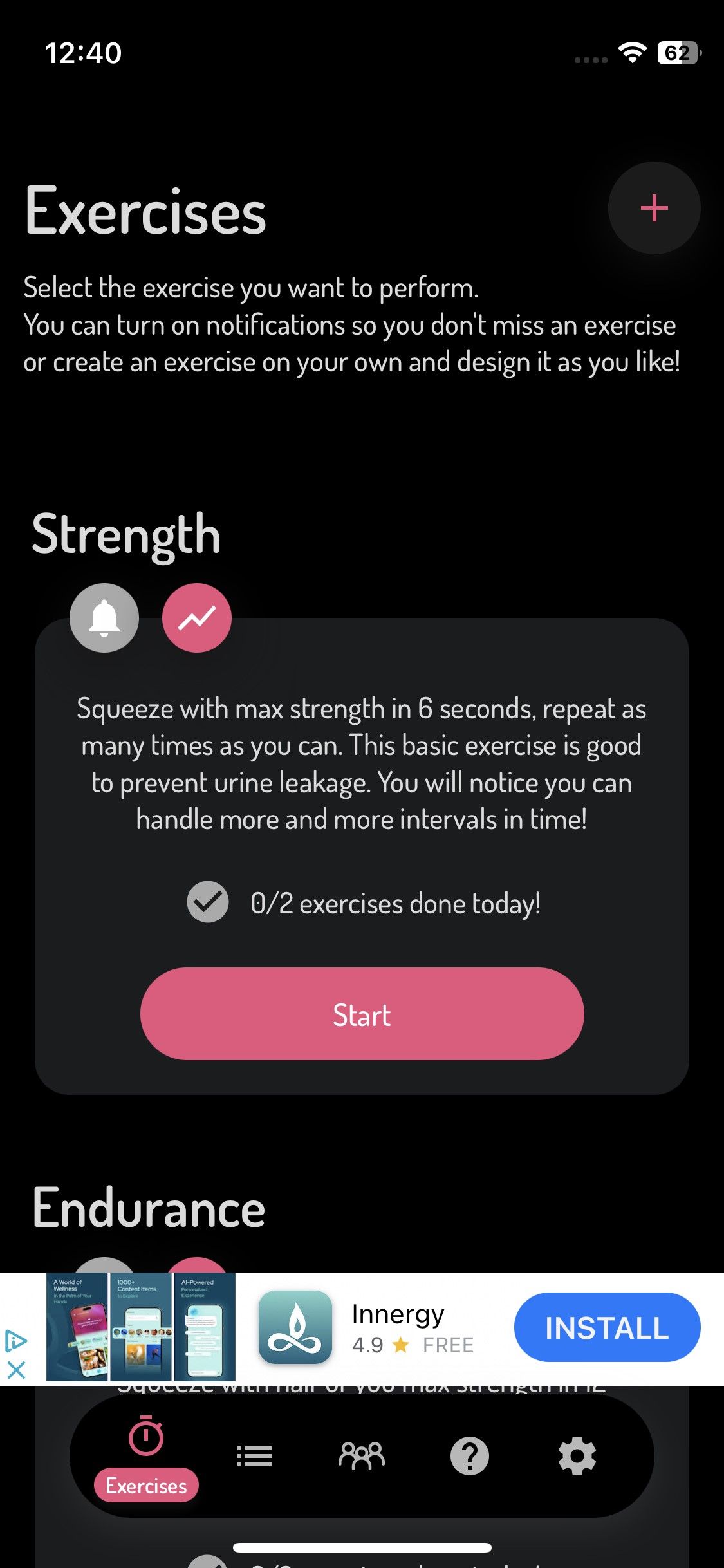
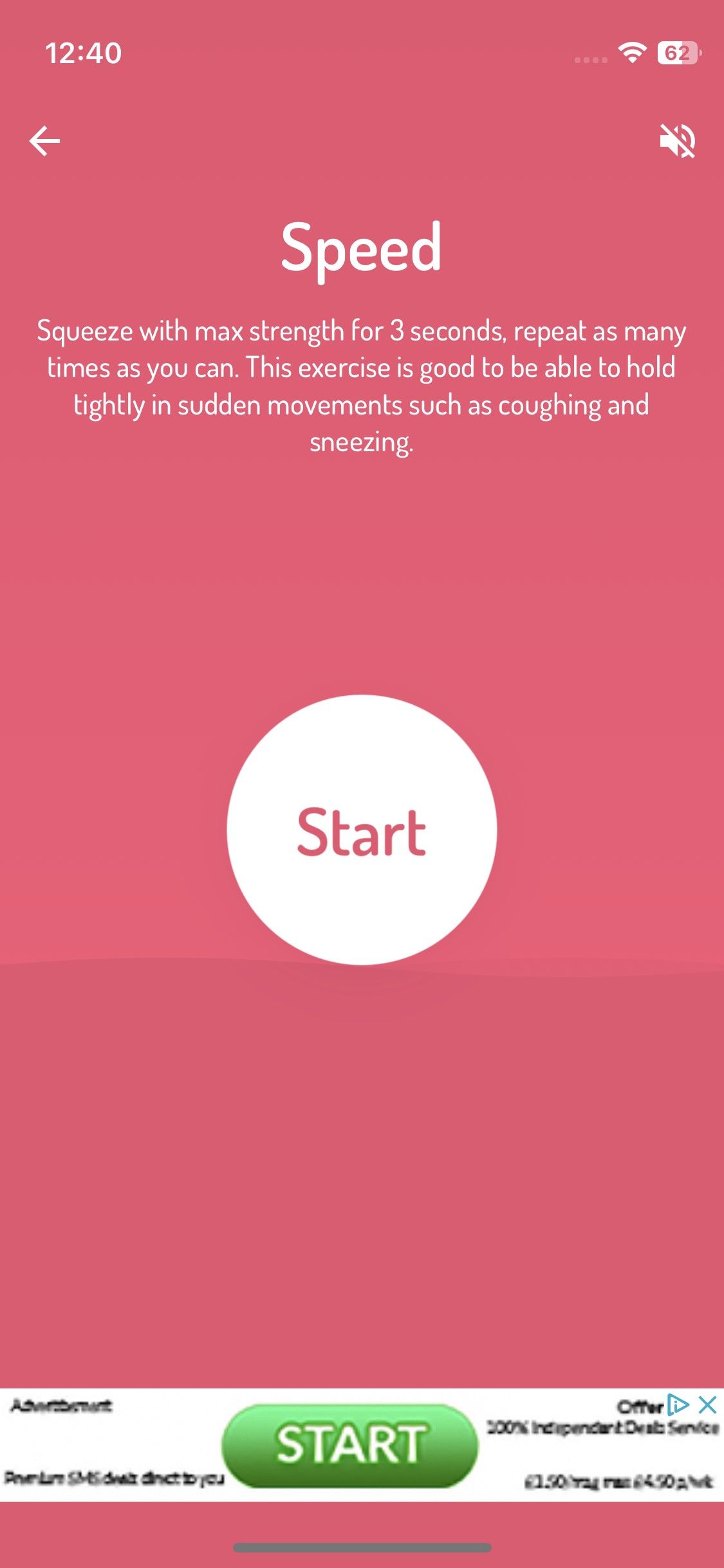
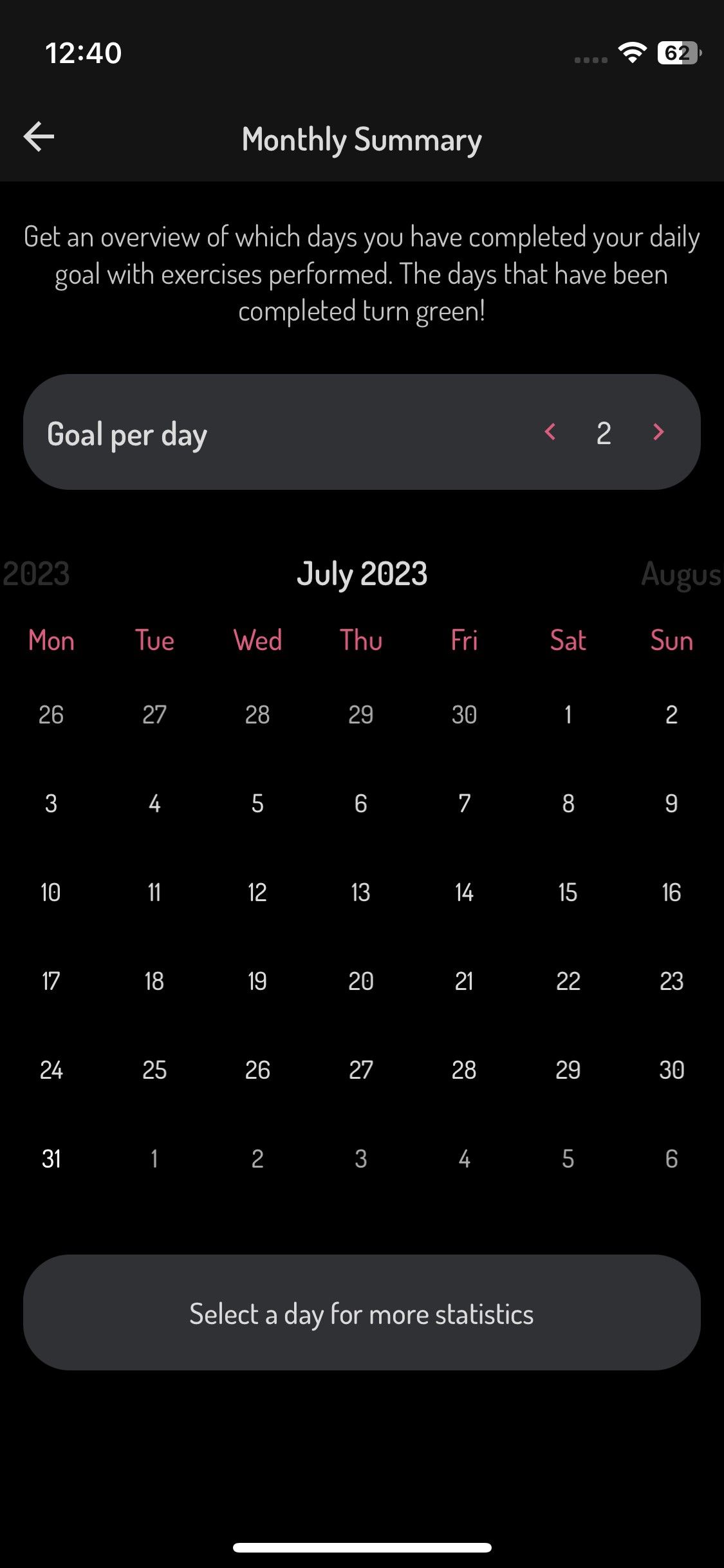
If you’re keen to get started with strengthening and taking care of your pelvic floor, then download Squeeze Time. This free app gives a brief but informative overview of pelvic floor muscle health and why it’s important to practice Kegels.
Navigate to the Exercises tab to select the exercises you want to perform. You can also enable notifications to remind you to regularly practice Kegels. The History tab provides an overview of the exercises you’ve performed, when you performed them, and how long your recent streak is.
Download: Squeeze Time for Android | iOS (Free, offers in-app purchases)
Take Care of Your Pelvic Floor Health With a Little Digital Help
Looking after your pelvic floor health is crucial for preventing health problems down the road. Educating yourself about your pelvic floor with the above resources is a good place to start. All of the above resources provide pelvic floor exercises that can help you strengthen these all-important muscles and improve your health while preventing pelvic floor health issues and the potential for needing corrective surgery.






